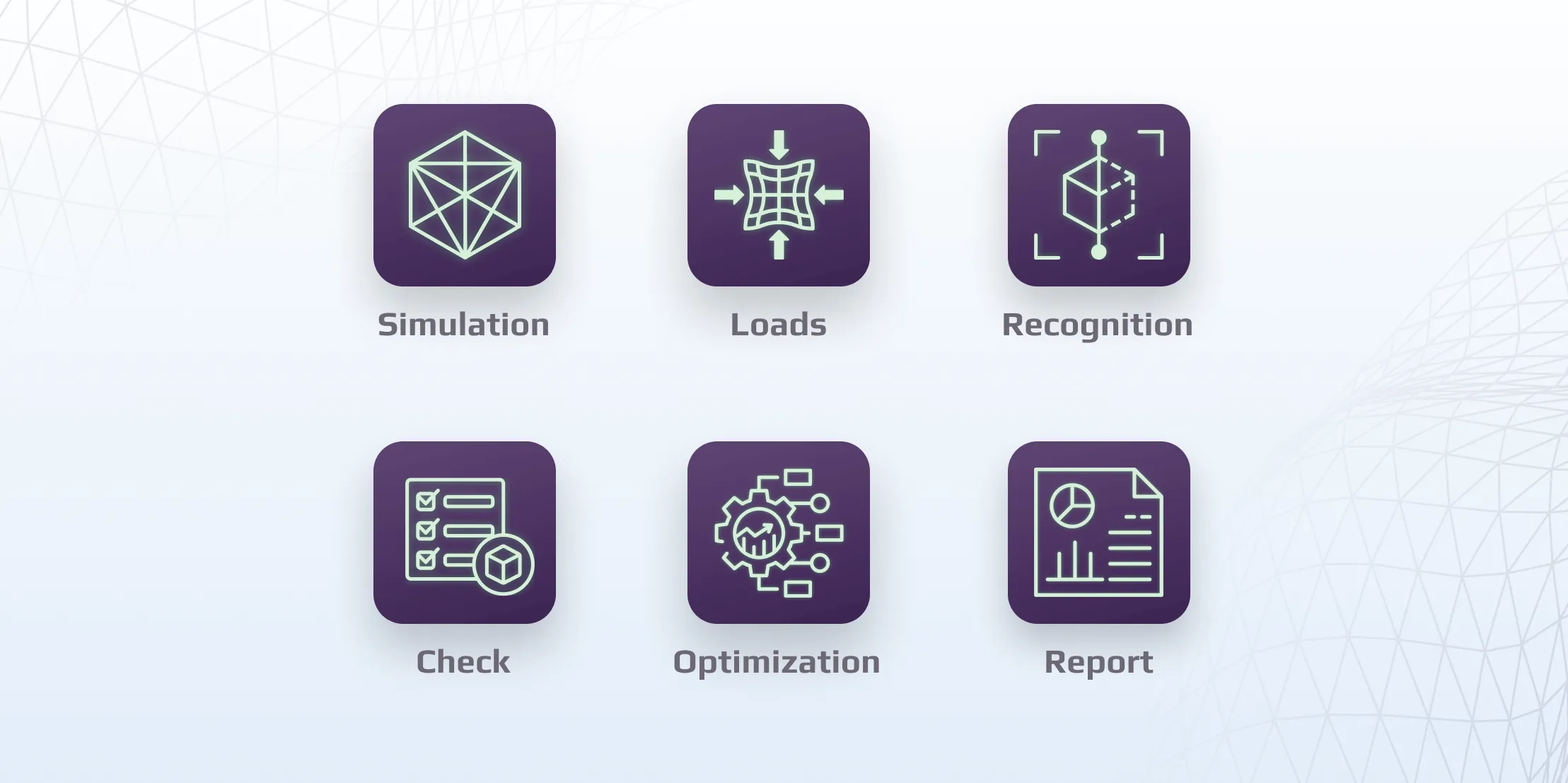Covers throat stress checks, eccentricity effects, and section-level utilization.
DNV OS-C201-WSD Weld Strength (2011) defines strength checks for welded joints under the Working Stress Design method. SDC Verifier implements Section 9 of the standard to validate:
Unlike LRFD, this WSD-based check uses safety factors derived from η₀ (Table E1), where SF = 1 / η₀. Key parameters include:
All weld stress evaluations are derived from defined weld leg lengths and checked against permissible limits. Warnings are flagged when the defined geometry violates minimum requirements.

Work directly within Ansys, Femap, or Simcenter 3D without switching platforms.
Instantly identify beams, plates, welds, and joints in your FEA model.
Perform code checks with built-in support for ABS, AISC, Eurocode, API, and more.
Detect overstressed areas and refine your design with data-driven decisions.
Generate customizable, fully traceable reports with all calculations and references.
ABS Standards
AIJ Standards
AISC Standards
API Standards
ASME Standards
Australian Standards
British Standards
Bureau Veritas Standards
DIN Standards
DNV Standards
DVS Standards
EN 13001 Standard
Eurocode 3
Eurocode 9
F.E.M. 1.001
FKM Standard
IACS Standards
ISO
Lloyd’s Register (LR) Standards
NORSOK Standards
VDI Standards